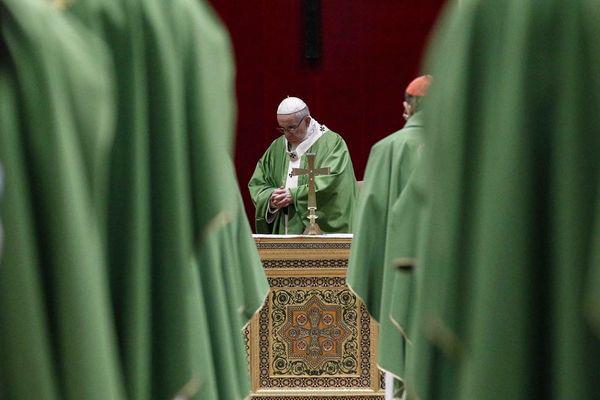|
Targeting priests is a new low in lawyer advertising (commentary)
By Daniel Leddy
On June 27, 1977, a sharply divided U.S. Supreme Court sent shockwaves through the legal profession by holding that the First Amendment’s free speech clause protects the right of lawyers to advertise their services. The ruling in Bates v. State Bar of Arizona overturned the discipline meted out to two young lawyers for placing a straightforward, dignified advertisement in the Arizona Republic informing readers of the basic legal services performed at their “clinic” and the fee for each. Writing for the 5-4 majority, Justice Harry Blackmun asserted that lawyer advertising would further reliable decision-making, and discounted fears that some lawyers would use advertising gimmicks to deceive the public. In contrast, Justice Lewis Powell’s strongly worded dissent predicted that the decision would weaken the ability of the states to regulate attorney conduct, and “effect profound changes in the practice of law, viewed for centuries as a learned profession.” Powell’s concerns were prophetic. For in the aftermath of the Bates decision, the legal profession has been denigrated by absurdities such as lawyers declaring themselves to be “tough and mean;” pronouncing themselves to be “pit bulls,” proclaiming their willingness to do “whatever it takes to win;” claiming to represent space aliens; emerging from the ocean bearing spear guns because so many other lawyers are “sharks,” and even sending bouquets of flowers to funeral homes where victims of legally actionable tragedies were being waked. Last Tuesday, attorney Jeff Anderson moved offensive attorney advertising from the disgraceful to the despicable with a press release announcing “the names of more than 100 perpetrators accused of sexual misconduct in the Archdiocese of New York.” Telling omissions Note, initially, the deceptive language. People who are merely "accused of sexual misconduct" are not "perpetrators". Note, too, the absence of alleged abusers in the public school system, The Boy Scouts, the orthodox Jewish community, and the many other entities from which they most assuredly come. These omissions are telling because, as indicated in a report published last August in Psychology Today, “No empirical data exists that suggests that Catholic clerics sexually abuse minors at a level higher than clerics from other religious traditions or from other groups of men who have ready access and power over children (e.g. school teachers, coaches).” Several other studies have reached the same conclusion. Dubbed the “Anderson list” for self-promotion, the compilation is featured prominently on the home page of the firm’s website. It fits quite nicely there too, given that the site as whole bristles with hostility toward the Catholic Church. That, unfortunately, is par for the course for Anderson. After California enacted legislation lifting the statute of limitations to reinstate previously time-barred sex abuse claims, Anderson boasted, “I’m not waiting for it to click in. I’m suing the sh** out of [The Catholic Church] everywhere: in Santa Clara, Santa Rosa, in San Francisco, in Oakland, in L.A., and every place else.” In a 2010 Washington Post article, Anderson castigated Vatican officials, including then Pope Benedict XVI, declaring, "We're chasing them. We're taking bites out of their ass". If he were to attack any other identifiable religious, racial or ethnic group with such disparate hostility, he'd be immediately branded a bigot and widely condemned. In today's increasingly secular society, however, where anti-Catholicism remains the only acceptable bias, he not only gets a pass but, in many quarters, accolades. Motive evident Anderson's motive in publishing the list is evident by its juxtaposition on his website with New York's recently enacted Child Victims Act. Similar to the California law that had him salivating, the new statute reinstates previously time-barred lawsuits for sexual abuse for a period of one-year. By publishing the names of Catholic priests who've been accused of such conduct, he hopes to induce new claims against them. He realizes too, of course, that since many of them are dead, it would be difficult to impossible for the Church to mount a successful defense. Which is the precise infirmity with the statute that I pointed out in a previous column. And his frenzied solicitation of new claimants is precisely what I predicted would follow from lawyers of his ilk Anderson does acknowledge on his website that the vast majority of allegations against the priests named on his list have not been substantiated in a court of law, and, hence, “all individuals should be considered innocent until proven guilty.” However, the placement of the disclaimer makes it easy to overlook, and, in any event, it’s so dwarfed by bombastic , provocative pitches that it’s of no greater consequence than a burp in a blizzard. It’s sincerity is also belied by the fact that if Anderson really had any regard for the reputations of these priests – or, for that matter, an iota of decency – he wouldn’t have published the list in the first place. Anderson has made a career for himself by shamelessly fanning the flames of hostility toward the Catholic Church. He’s gotten to do so because the slimmest majority of Supreme Court Justices thought lawyer advertising would be a good thing. And he’s now Exhibit A for how wrong they were.
|
.
Any original material on these pages is copyright © BishopAccountability.org 2004. Reproduce freely with attribution.
